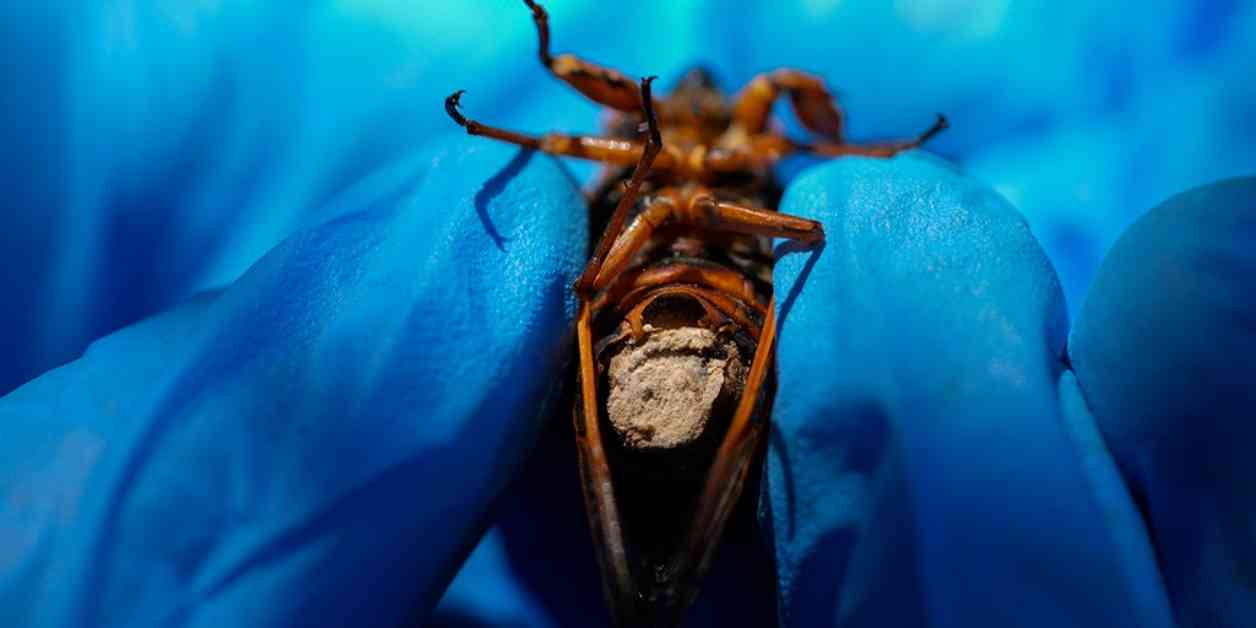Scientists have been studying cicadas infected with a parasitic fungus called Massospora cicadina, which turns the insects into hypersexual “zombies” on amphetamine. This fungus takes over the cicadas’ bodies, turning their backs into a chalky mess of spores and replacing their genitalia with a fungal plug. When the plug gets ripped open during mating, the cicada spreads the fungus by raining down spores.
West Virginia University mycology professor Matt Kasson, along with his son Oliver and graduate student Angie Macias, traveled to the Morton Arboretum in Chicago to collect infected cicadas. Despite infected cicadas being rare, Kasson’s team managed to collect 36 specimens during their brief hunt. They have received an additional 200 infected cicadas from people around the country and are awaiting an RNA analysis of the fungus.
The Massospora cicadina fungus is unique in that it produces amphetamine, making it the only fungus on Earth to do so. Kasson described the fungus as a mycological oddity with the biggest genome, producing wild compounds that keep the host active. While the infected cicadas exhibit bizarre behavior, experts assure that the fungus poses no danger to humans or other animals.
In conclusion, the study of cicadas infected with the Massospora cicadina fungus sheds light on the fascinating world of parasitic relationships in nature. The bizarre effects of the fungus on cicadas serve as a reminder of the intricate and often strange interactions that occur within ecosystems. Through further research and analysis, scientists hope to uncover more about the unique characteristics of this parasitic fungus and its impact on cicada populations.




